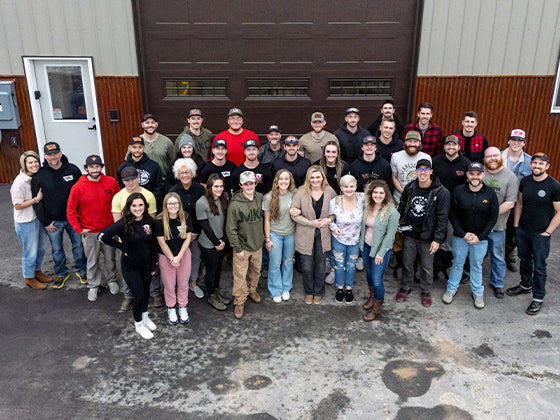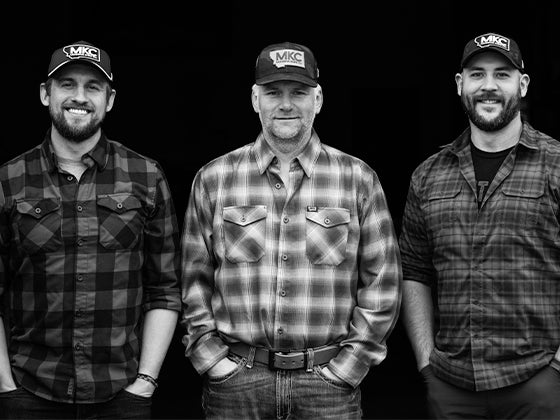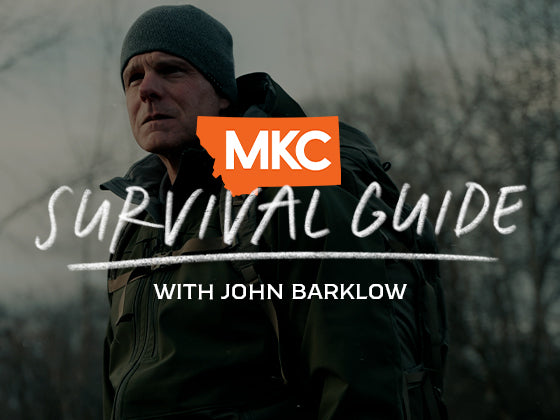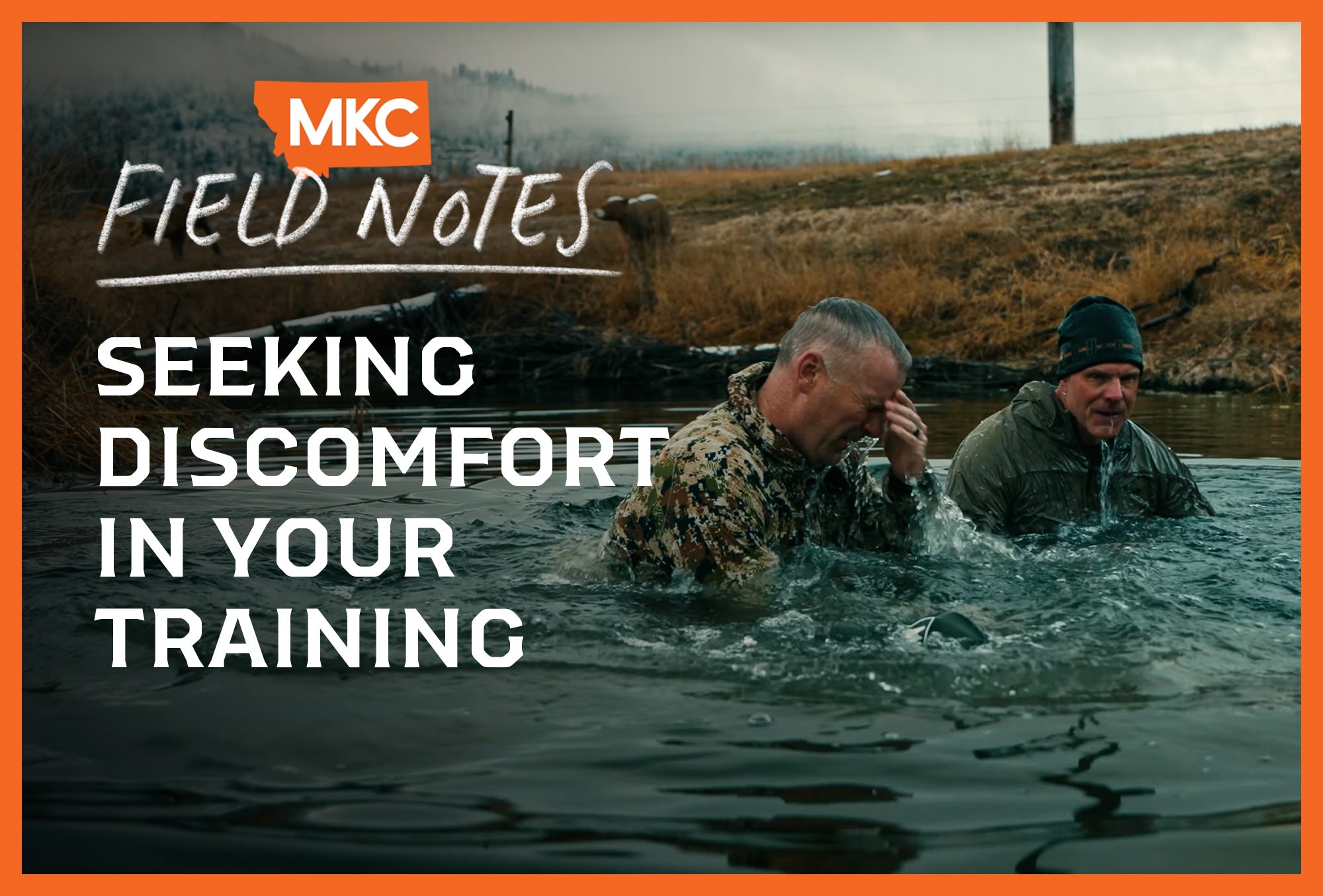Learning how to stay warm when wet is critical for survival in the backcountry. Death becomes a real possibility when you’re miles from help with freezing temperatures setting in.
After teaching my technique — the rewarming drill — for over 20 years, starting in Alaska during winter warfare training, I’ve seen firsthand that knowing how to stay warm when wet turns potential emergencies into manageable situations.
That’s why I’m sharing proven techniques for how to stay warm when wet, including the rewarming drill, gear selection, and both static and dynamic approaches to managing wetness in freezing conditions.
Why Learning How to Stay Warm When Wet Is Critical
Backcountry wetness doesn’t need deep water.
A slip off a log crossing puts you knee-deep in a creek. Snow collapses along a riverbank, dropping you waist-deep in a freezing current. Packrafting accidents, canoe flips, or horse troubles during river crossings — they all create the same problem.
I recently spoke to master bladesmith Josh Smith, founder of MKC, who recalled a British Columbia moose hunt where his son nearly lost his balance crossing a beaver dam. They shot a moose that night, but the situation could have easily resulted in a wet hunter miles from civilization.
These incidents happen fast, without warning, and far from help. Whether you’re drenched from rain, soaked from a river crossing, or damp from sweat, staying warm in wet conditions requires immediate action.
The rewarming drill is a lifesaver in worst-case conditions: you’re wet, deep in the backcountry, evacuation isn’t possible, and you can’t hike to shelter. You need to solve the problem where you stand with what you carry.
Practice Under Controlled Conditions
Why would anyone voluntarily jump into cold water? The answer is controlled testing.
You need to practice at home where consequences are manageable. It exposes three vulnerabilities:
- Clothing system weaknesses
- Equipment limitations
- Poor communication with your partner
Your expensive technical clothing needs to be tested in real conditions. We invest thousands in gear that claims to handle moisture, but manufacturers’ temperature ratings only tell part of the story.
Personal physiology, fuel intake, shelter choice, and weather patterns also affect performance. Testing reveals your true capabilities under pressure.
In the military, your mission continues even if you’re cold, wet, and hungry. As hunters, we, too, want to continue after drawing a once-in-a-lifetime tag or investing vacation time. We don’t want a creek crossing accident to end our trip early — which is why we need to learn how to stay warm when wet.

How to Stay Warm When Wet: The Static Rewarming Drill
Never attempt the rewarming drill alone or without safety measures.
Military versions include medical teams and ambulances on standby. Civilian practice requires modified safety:
- Practice with partners watching
- Keep emergency vehicles nearby
- Have warm shelter immediately available
- Bring extra dry clothing sets
- Maintain communication abilities
The rewarming drill starts with full immersion — head underwater. This simulates worst-case scenarios like falling through ice or deep creek crossings. The clock starts immediately.
Your first action is counterintuitive yet critical: DON’T remove wet clothes. Instead, immediately put on puffy insulation over wet layers.
Removing wet clothes first only delays insulation while you lose body heat. Modern technical fabrics trap heat even when wet. Your body becomes the drying mechanism.
Taking time to strip down only delays the inevitable. You’ll end up with a frozen pile of clothes that need thawing before leaving the backcountry.
Seek shelter immediately after putting on puffies. This means setting up your tent fast. Move urgently: ground pad in first, sleeping bag ready, boots off at the door. Within minutes, secure yourself inside the shelter.
Inside the tent, body heat creates a microclimate. Modern clothing systems push moisture outward through technical fabrics — you can visually watch this process as water beads on your outer layers.
Next, break out your stove. Hot liquids warm your core from the inside. Plus, replenishing hydration helps your body maintain temperature regulation.
Eat calorie-dense foods, too. They’ll fire up your internal metabolism.
Change into dry socks immediately — perhaps puffy socks or camp booties, if you have them.
If your boots are wet, put them under your knees inside the sleeping bag to prevent them from freezing. For added efficiency, boil water for Nalgene bottles to place inside your boots.
Vapor barrier socks (VBL) are great, too. They provide extra protection when placing dry feet into wet boots. These waterproof barriers prevent moisture transfer while maintaining insulation, similar to the bread bags our mothers used before GORE-TEX existed.
The key takeaway? Your body generates enough heat to dry yourself out, but only with proper insulation and time. The tent becomes a sauna powered by body heat and respiration.
The Dynamic Rewarming Drill
I just explained the “static rewarming drill” — getting into shelter and using your protected microclimate to recover. But sometimes, movement is your best option.
The “dynamic rewarming drill” is best when you’re close to permanent shelter — perhaps an hour from your vehicle or cabin. The process starts identically: puffies on immediately over wet clothes. Rather than setting up camp, begin hiking to generate additional body heat while cutting distance to safety.
In both scenarios, immediate insulation comes first. The worst mistake is delaying this step to remove wet clothes or attempting to start a fire. Address the heat loss first, then work through other priorities.
Beyond the technical aspects, both the dynamic and static rewarming drills build mental resilience and test hunting partnerships. Executing these steps under pressure requires practice and confidence, but the results are worth it.
For instance, I recently went on a solo Dall sheep hunt in Alaska, where the weather deteriorated daily. Returning to shelter, drying out, warming up, and hitting the reset button helped me continue the hunt.
Beyond Technical Clothing
Modern technical fabrics are lifesaving, especially when it comes to staying warm in wet weather. Traditional wool and canvas gear can’t perform this way — the margin for error is smaller; the risk of hypothermia greater.
For base layers, polyester dries faster than alternatives like merino wool, though wool manages odor better during long hunts. Wear thin base layers rather than thick ones — thinner fabrics dry faster against skin.
Down insulation requires special consideration. Treated down bags show remarkable moisture resilience. Without treatment, a down bag would compress into a useless, shriveled mass when exposed to moisture.
Synthetic insulation is moisture-resistant but heavy and tough to pack. For backcountry hunters, treated down or synthetic options work exclusively — traditional untreated down is too vulnerable to moisture.
How to Stay Warm When Wet: Final Thoughts
Learning how to stay warm when wet comes down to one crucial lesson: Your reaction in the first few minutes after getting wet determines your survival outcome.
Most hunters make critical errors immediately after getting wet — delaying insulation, wasting body heat, or prioritizing fire-starting over shelter. These mistakes compound quickly in backcountry conditions.
Knowing how to stay warm when wet extends your time in the field, and realistic training builds confidence in your gear and abilities. Practice it safely before your next backcountry adventure — your life might depend on it.

by John Barklow, a Special Operations Survival Instructor and consultant who has spent decades teaching military personnel and civilians survival techniques in extreme environments.






































